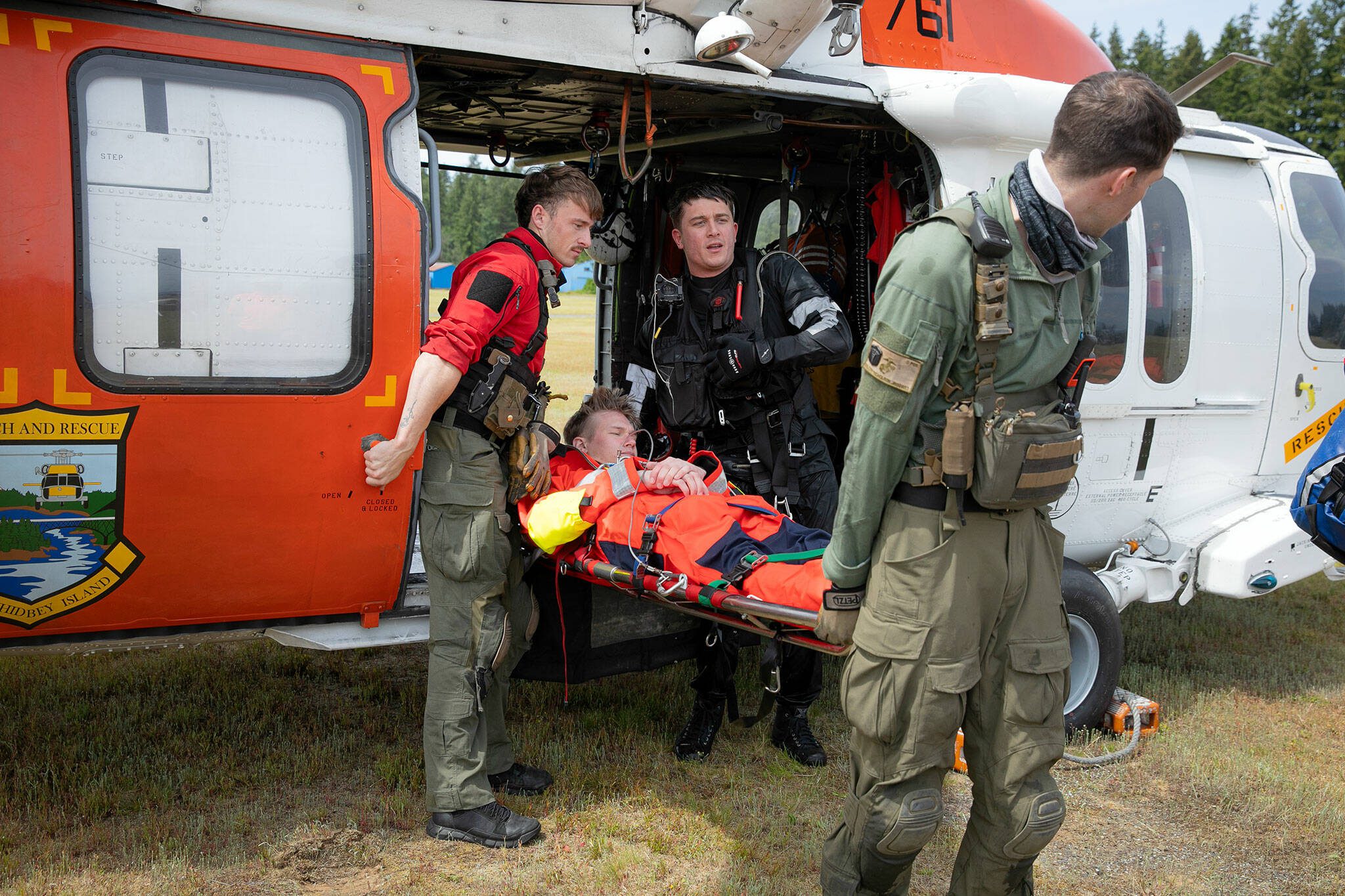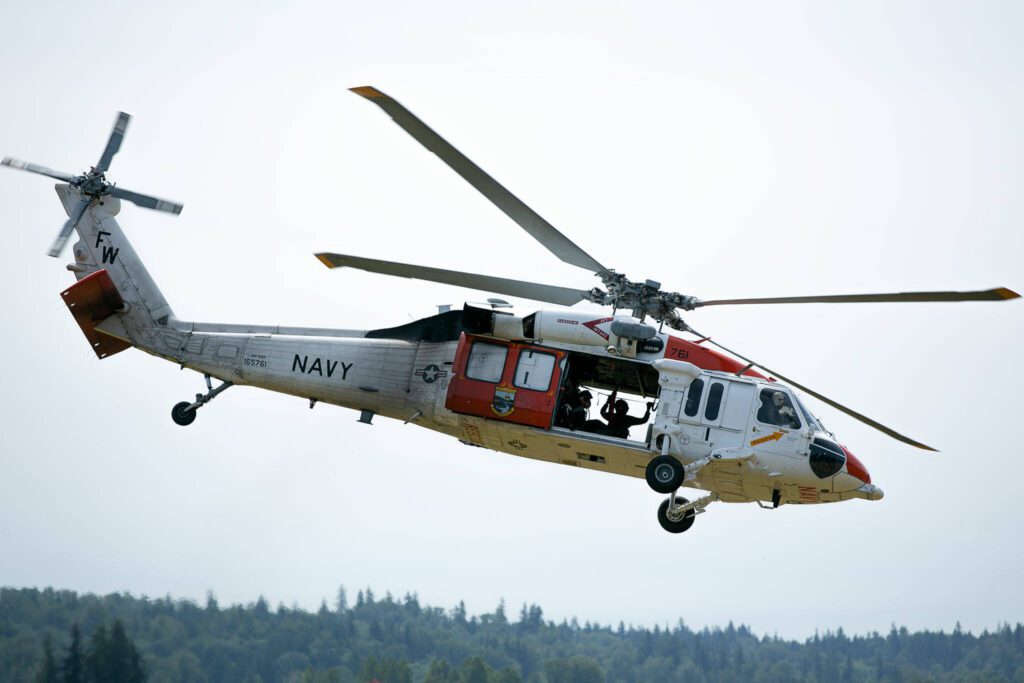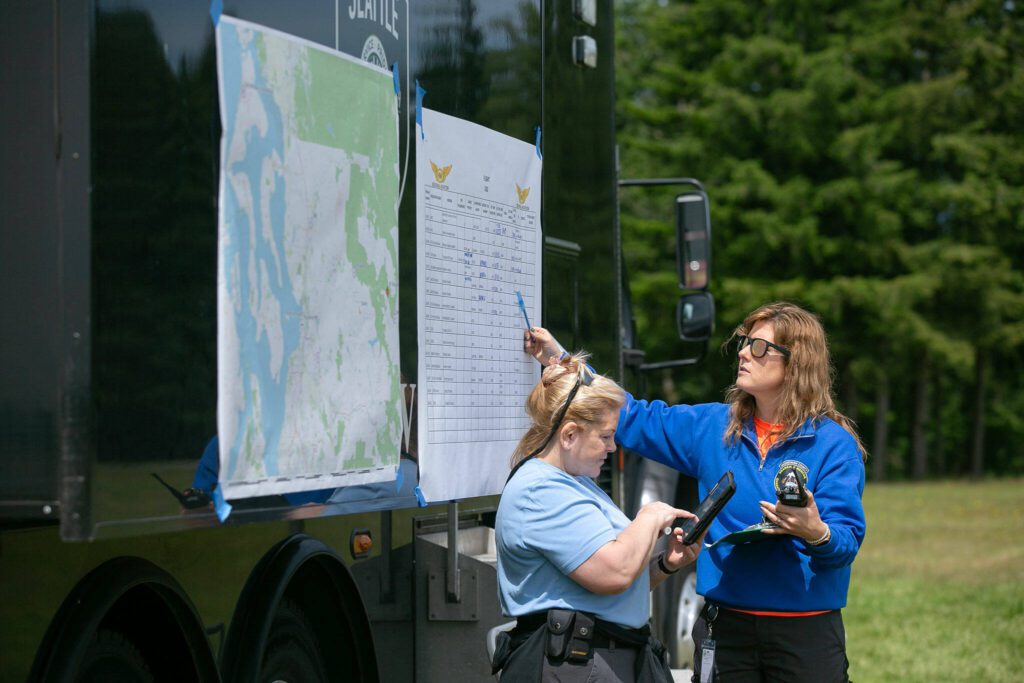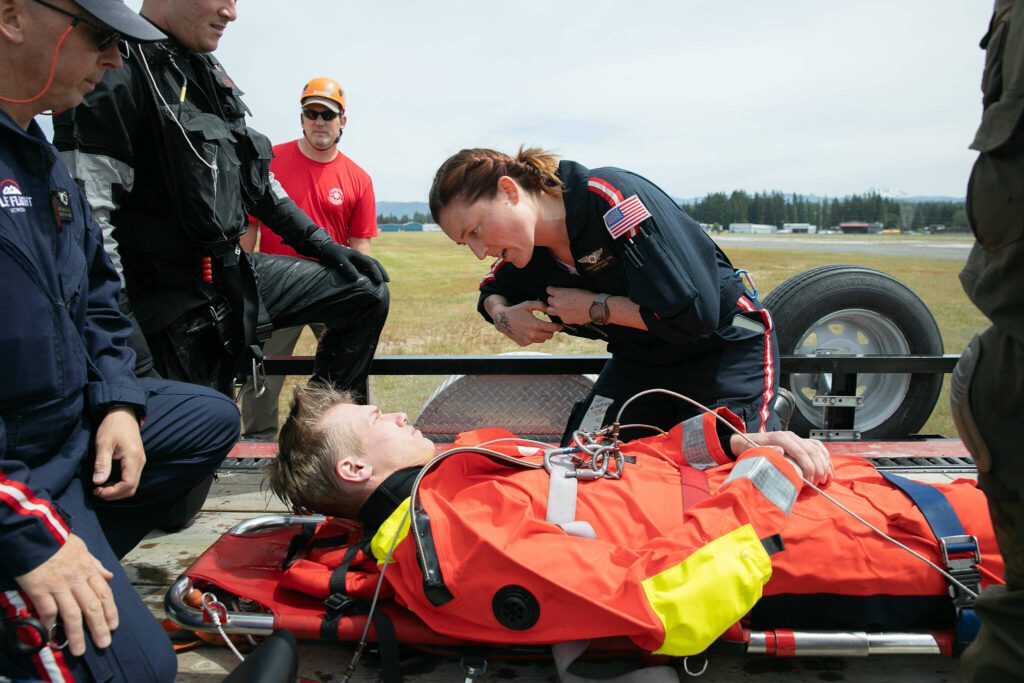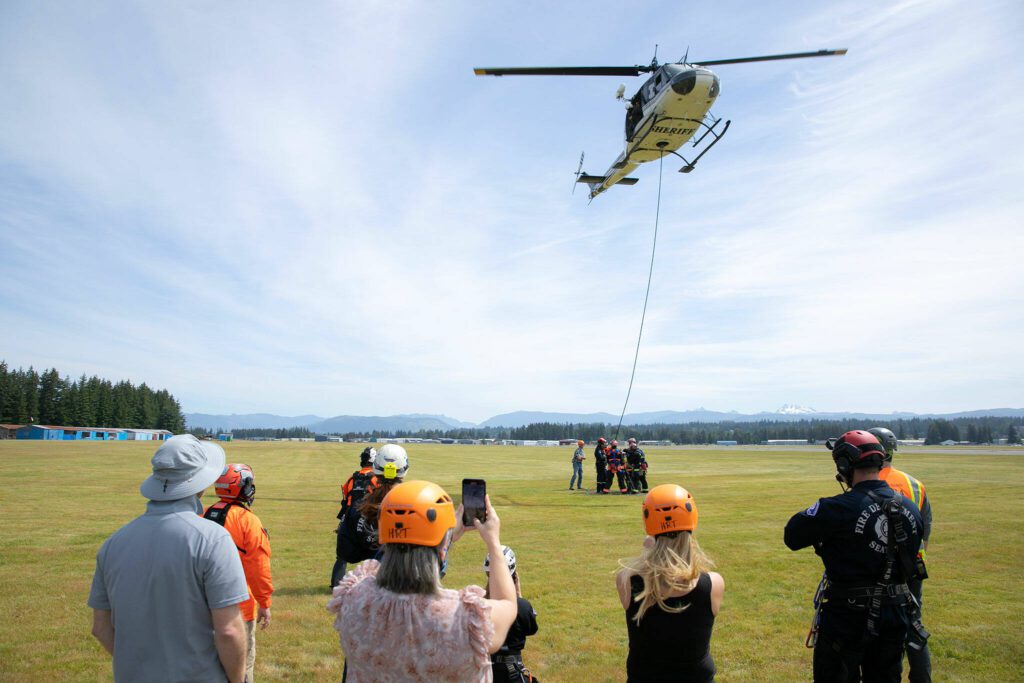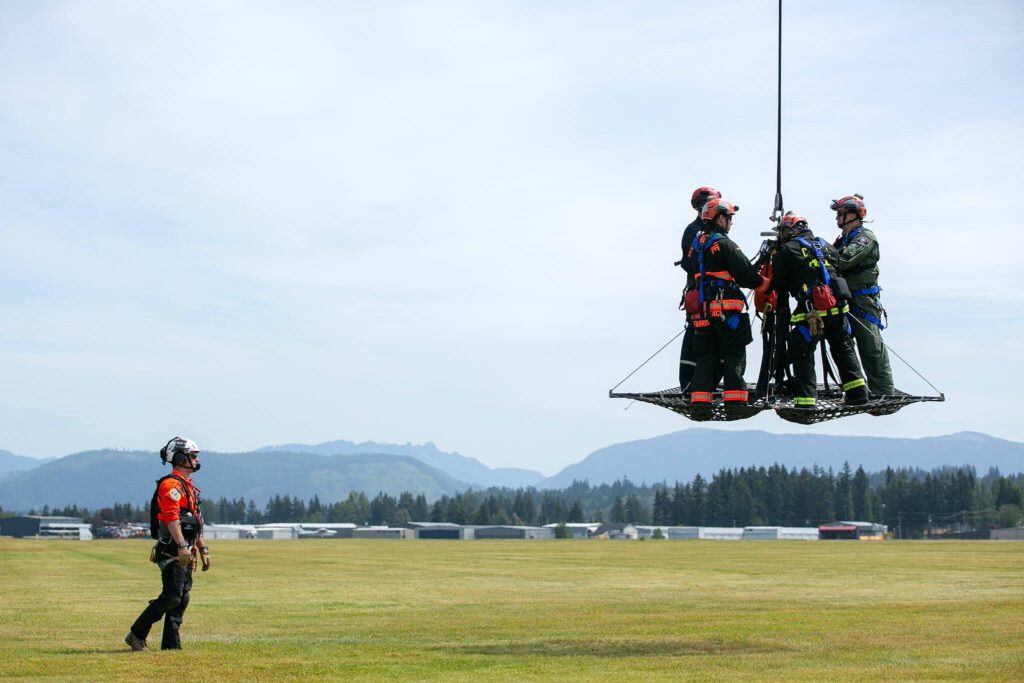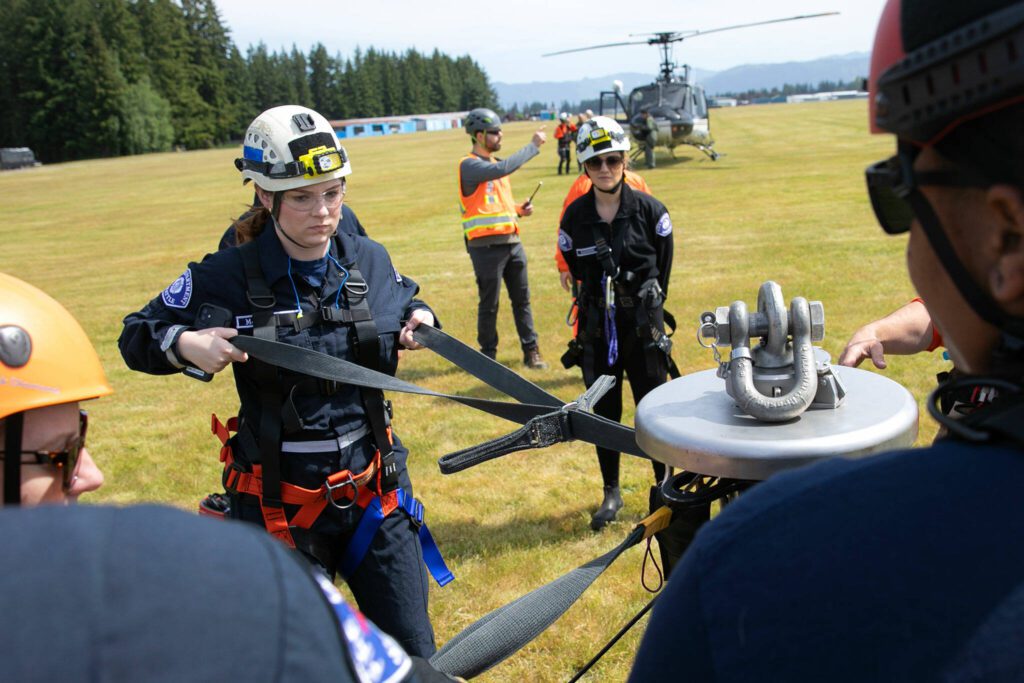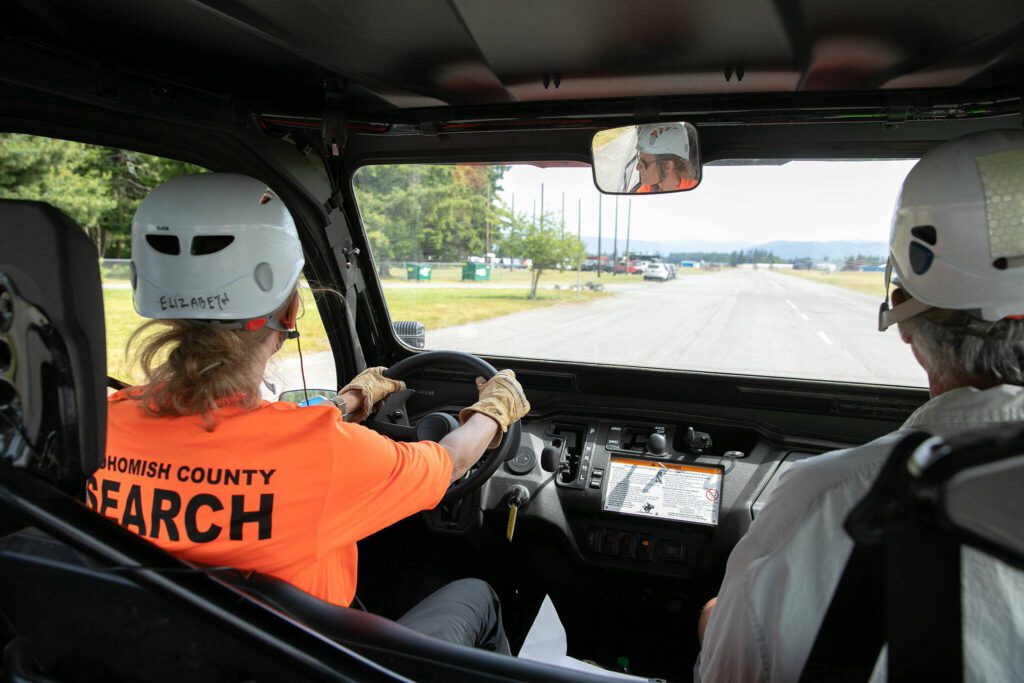ARLINGTON — Local rescue teams tackled a series of disasters Thursday, transporting victims from a destroyed ferry, a high-rise building and an active shootout with injured police officers.
It was all a drill, training for what first responders would do if a coordinated terrorist attack hit Snohomish County.
For the third straight year, the Northwest Aviation Consortium brought together agencies from across the state to simulate such a response.
“It’s about communication and coordination,” said Bill Quistorf, chief pilot for the Snohomish County Sheriff’s Office. “There are a lot of factors involved, different frequencies of communication, it can get complicated.”
With temperatures in the high 60s and few clouds in the sky, conditions were optimal for fire and police agencies, primarily from Snohomish and King counties, to converge at the Arlington Municipal Airport.
The training revolved around the agencies communicating to locate injured people and bring them to safety. In a long grass field at the airport, seven helicopters sat side-by-side as crews waited for instructions to venture out and locate survivors.
“The feedback and insights shared during the exercise will help us continue to improve our response during a real-world disaster situation,” Arlington spokesperson Mandy Kruger said.
The first scenario involved a number of people stranded in the water after a ferry was destroyed. The Coast Guard called in Naval Air Station Whidbey Island’s Search and Rescue team to assist. The team headed to the waters near Hat Island in an MH-60 Seahawk to rescue the survivors.
Quistorf, soft-spoken with enough flying knowledge to last many lifetimes, started as a pilot in the Vietnam War after volunteering so he could pay for his college education through the G.I. Bill. After graduating college with an art degree, Quistorf remained a pilot in the military for 25 years. He has been with the sheriff’s office for the past 24 years. He trained some of the pilots participating in the simulation Thursday.
“I try to give the junior pilots the flight time on the controls doing the rescue, and I monitor everything,” Quistorf said.
King County sheriff’s deputy and pilot Alex Paul was part of a rescue team that dropped off a police dog, Roo, to search a collapsed building. For Paul, it was all in a day’s work.
“We do a lot of police control support and search and rescue stuff on a daily basis,” Paul said. “Just getting more experience when we’re working together makes it a whole lot easier when we need to anticipate what someone else might be needing. So we’re not surprised.”
Responders returned in helicopters with the survivors, transporting them to Providence Regional Medical Center Everett.
An active shootout was the final scenario. Helicopters took deputies to Taylor’s Landing near Snohomish, where two officers were reported to be wounded. Paramedics took them to Providence.
Rescue teams also practiced using an “upside-down umbrella” device known as an Air Tactical Evaluation Platform that can hold up to 10 people, Seattle firefighter Aaron McCandless said. In disaster scenarios, such as carrying people away from a mountain, a helicopter can hover over a dangerous area and load people onto the platform to safely evacuate them.
Snohomish County obtained the platform in 2014 following the Oso mudslide.
On Thursday, responders practiced loading the platform as the Snohomish County helicopter lifted them slowly into the air. Arlington airport operations specialist Taylor Monzingo was one of the people carried on the platform.
“It was amazing,” Monzingo said. “I wish I thought to bring a GoPro beforehand.”
Jonathan Tall: 425-339-3486; jonathan.tall@heraldnet.com; Twitter: @snocojon.
Talk to us
> Give us your news tips.
> Send us a letter to the editor.
> More Herald contact information.
